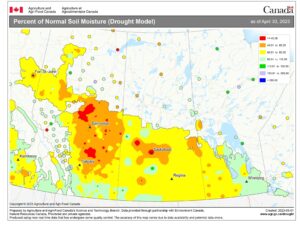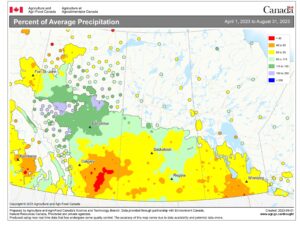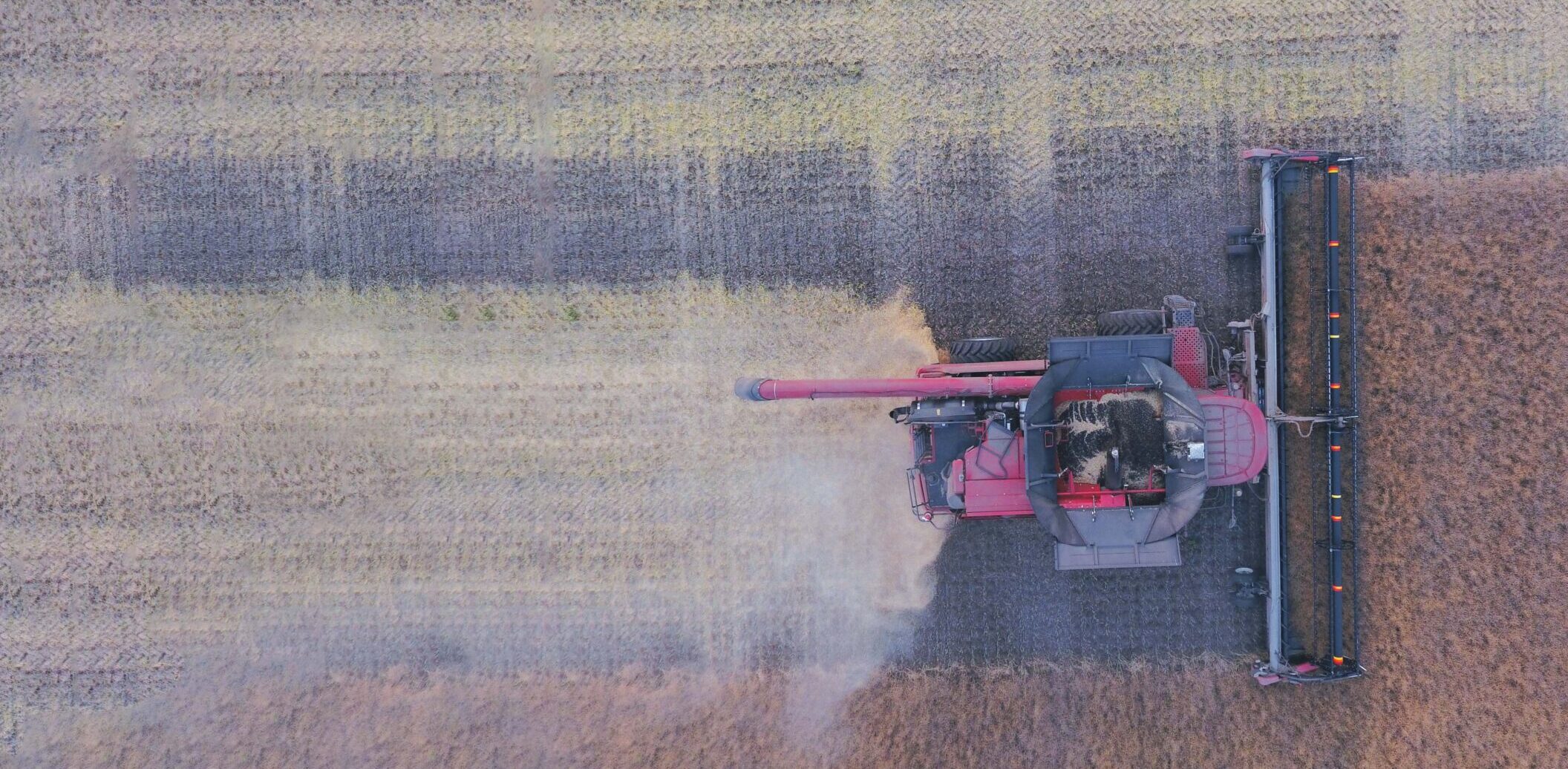Canola market snapshot – Lower supply
Low in-season rainfall withered average Canadian canola yields in 2023.
Statistics Canada production estimates, released mid September based on August satellite imagery and agroclimatic data, put Canadian canola production at 17.4 million tonnes for 2023. That is down from 18.7 million in 2022 and the 2018-22 average of 18.6 million.
The general rule is that canola needs an inch of available moisture for every four bushels per acre of yield. Therefore, a 50-bushel crop needs about 12 inches of moisture, supplied from soil reserves and in-season rainfall.
Of the eight locations analyzed for this article, some had decent growing season rainfall and one, Camrose, actually had 12 inches. (See Table 1.) North central Alberta is, historically, a very good canola growing area and general yields should be OK in that region. For some areas of the Prairies, canola tapped into good soil moisture reserves to produce higher than expected yields given the rainfall. Central and eastern Manitoba, for example.
Other areas, especially the southwest Prairies, had low rainfall combined with extreme heat. Heat increases evaporation from leaves and soil and damages flowers and pollination. Days over 30°C at flowering will reduce canola yield, and yield drops with each day over 30°C.
StatCan, in its September report, forecast average Canadian canola yields at 35.0 bushels per acre, down from 38.8 in 2022. (See Table 2.) The Canadian average yield for the five years from 2016 to 2020 was 41.6. Yield for 2021, the drought year, was 27.4.
StatCan will release its final survey-based production estimates for 2023 on December 4, 2023. Click here to find the report.
Yield estimates for 2023 by province are 32.8 for Saskatchewan, 37.8 for Alberta and 38.2 for Manitoba. Harvested area is forecast at 21.9 million acres, up three per cent from 2022.
Globally, the USDA Foreign Agriculture Service (FAS), in its September 2023 Oilseeds: World markets and trade report, estimates 2023-24 canola and rapeseed production at 85.2 million tonnes. This is down over three million from last year, mostly because of Canada’s reduced production.

Soybean production up
Meanwhile, global soybean production continues its boom.
FAS, in the same September oilseeds report, put 2023-24 soybean production at 401.3 million tonnes, up over 30 million from 2022-23.
The top three soybean producing countries are Brazil, the U.S. and Argentina. Brazil is forecast to produce 163 million tonnes of soybeans in 2023-24 (next spring’s harvest), up 35 million tonnes over the past five years. The U.S. crop (this fall’s harvest), at 113 million tonnes, is below last year but in line with its five-year average. Argentina is forecast to return to trend after a poor harvest earlier this year.
StatCan estimates Canadian soybean production at 6.7 million tonnes, up 2.7 per cent from 2022. Average yields are 44.2 bu./ac, down from 2022, while harvested acres, at 5.6 million, are up.
While Ontario leads the country with 4.0 million tonnes, Manitoba retains second place, slightly ahead of Quebec. StatCan estimates Manitoba soybean production at 1.4 million tonnes in 2023, up 4.5 per cent from 2022. Manitoba yield estimates are down 25 per cent, at 32.1 bushels per acre.
Overall global oilseed production (not including palm oil), as estimated in the FAS September report, was 630 million in 2022-23 and will be 661 million in 2023-24.
Olive production down
While olive oil represents a tiny fraction of global vegetable oil production, it has outsized space on store shelves. People selling bottled canola oil pay attention to olive oil. In its September 2023 report, FAS led with an update on crazy olive oil prices driven by weather-driven production issues around the Mediterranean. FAS reported olive oil prices at US$8,900 per tonne (Cdn$12,000) in August, surpassing the previous record of US$6,242 set in 1996.
International Olive Council (IOC), in its September price report, confirms the rapid rise. At Bari, Italy, IOC has extra virgin olive oil prices at €900 per 100kg (Cdn$13,000 per tonne) – more than double the year-ago price. By comparison, the 2022-23 average price for Canadian canola oil was Cdn$2,034 per tonne, up $150 from last year and almost double the previous five-year average.
Global olive oil production was 2.5 million tonnes for 2022-23 crop year, down from 3.3 million in 2021-22. Spain, by far the largest producer, saw production drop by half to 780,000 tonnes in 2022-23, according to IOC figures.
Olive oil prices show “no sign of easing,” FAS says.








